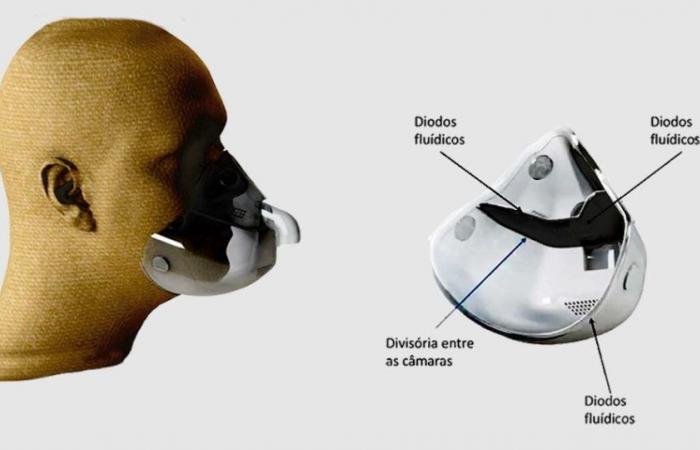03/28/2024
With information from Agência Fapesp
The new mask was designed based on a technique used in pneumatic industrial equipment.
[Imagem: Auspin]
Choke on air
A more efficient and comfortable mask for the treatment of obstructive sleep apnea is being developed by researchers at the USP Polytechnic School (University of São Paulo).
Taking advantage of technology used in a project on gas turbines, the researchers created a medical device whose difference is to avoid the “air choking” that occurs with the equipment used today for this, known as CPAP (acronym in English for Continuous Positive Airway Pressure). areas).
Sleep apnea is characterized by repetitive obstructions of the throat during sleep, which generate breathing pauses. In patients with the condition, the throat muscles close and only return to normal when the person wakes up, which can be repeated several times throughout a night’s sleep.
However, CPAP is not well tolerated by around 50% of patients. “Many people abandon CPAP treatment because they choke on the air that is being directed from the mouth to the nasal cavity. Furthermore, when choking occurs, the CPAP also stops working,” detailed researcher Vitor Bortolin.
Sleep apnea mask
The researchers were working on a technology to avoid greenhouse gas emissions in pneumatic machines, which involves minimizing the leakage of gases, such as carbon dioxide and methane, in compressors and turbines. That’s when the team realized that gas leaks also affect the CPAP.
The team then designed a mask with a divider between the nasal and oral cavities, taking advantage of the technique applied in gas industry equipment to circulate air between two cavities. This maintains, at the ideal level and in a self-regulating way, different air pressures in the nose and mouth – the pressure needs to be about 10% higher in the nose.
“We use a technique called fluidic diode, which is a valve, similar to a pipe, without moving parts and with curved filaments, designed to facilitate the transmission of air from the nose, where it arrives to the mouth, where the exit of air, and make it difficult for air to return from the mouth to the nose. This way, when the person opens their mouth, the valve will prevent the air from transferring to the nose, which prevents choking,” explained Vitor.
The valve and filaments were produced on a 3D printer and installed on a plate that divides the two cavities. The plate is made of plastic and covered with silicone padding. Due to its design and material characteristics, the equipment is much more comfortable and easier to use, whether at home or in a hospital environment.
The researchers now plan to test the prototype in patients.







